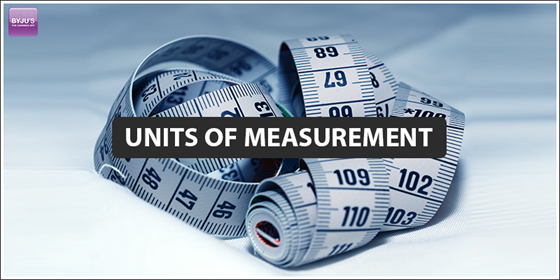History of measurement
Measurement is one of the fundamental concepts in science. Without the ability to measure it would be difficult for scientists to conduct experiments and form theories. The word “measurement” comes from the Greek word “metron,” which means “limited proportion.”
Measurement is a technique in which properties of an object are determined by comparing them to a standard.
Measurement requires tools to provide scientists with a quantity. A quantity describes how much of something there is and how many there are. Scientists use a system of measurement still commonly referred to as the “metric system.” It was the first standardized system of measurement, developed in France in the 1790s. Today, this form is the standard form of measurement in every country except the United States.

The Seven Base Units Of Measurement
- Length – Meter (m)
It is defined as the length of the path travelled by light in an interval of exactly
- Time – Second (s)
The time taken by 9 192 631 770 periods of oscillations of the light emitted by a cesium -133 atoms corresponding to the transition between two hyper-fine levels of the ground state. This is determined by using highly precise atomic clocks.
- Mass – Kilogram (kg)
It is the mass of a prototype platinum-iridium cylinder kept at the International Bureau of Weights and Measures in Paris, France. Copies of this cylinder are kept by many countries which use them to standardize and compare weights.
- Electric current – Ampere (A)
The constant current which, if maintained in two straight parallel conductors of infinite length and negligible circular cross-section when placed 1 m apart in vacuum, would produce a force equal to
- Temperature – Kelvin (K)
The SI unit of temperature is Kelvin. It is exactly
- Amount of a substance – Mole (mol)
- Luminous Intensity – Candela (cd)
It is the luminous intensity of a source that emits radiation of a constant frequency of
Derived Units
The units of measurement derived from the seven base units specified by the International System of Units is known as SI derived units. They are either dimensionless or can be expressed as a product of one or more of the base units, possibly scaled by an appropriate power of exponentiation. The names of SI derived units, when written in full, are always in lowercase. However, the symbols for units named after persons are written with an uppercase initial letter. For example, the symbol for hertz is “Hz”, but the symbol for metre is “m.” In the table below, we have given a list of derived units.
| Name | Symbol |
Quantity |
|
hertz |
Hz |
Frequency |
|
radian |
rad |
angle |
|
newton |
N |
force, weight |
|
farad |
F |
electrical capacitance |
|
ohm |
Ω |
electrical resistance, impedance, reactance |
|
weber |
Wb |
magnetic flux |
|
degree Celsius |
°C |
temperature relative to 273.15 K |
|
becquerel |
Bq |
radioactivity (decays per unit time) |
Stay tuned with BYJU’S to learn more about temperature, electric charge and many more.


It is so nice and helpful for many students.
Too much helpful
It’s very helpful!